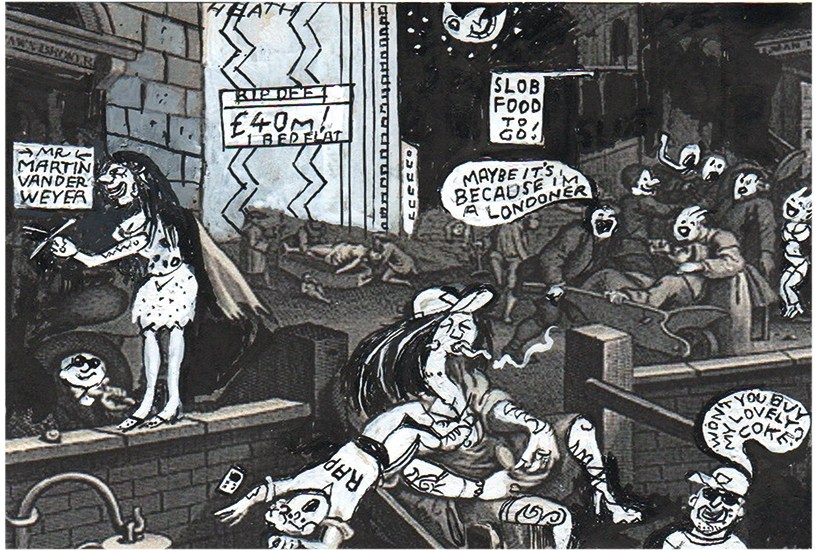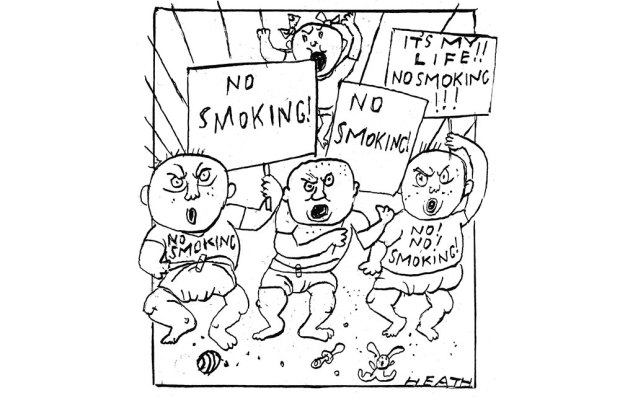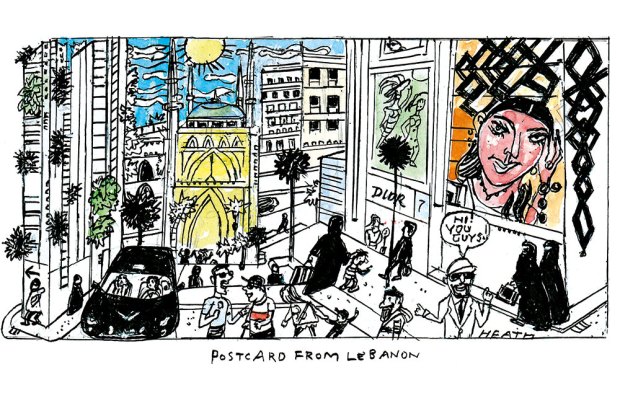‘Londoners searching for more space during Covid are buying up English country manors,’ said a Wall Street Journal headline in January — and that was certainly the trend reported by eager out-of-town estate agents. The middle classes,spurred by a temporary stamp-duty cut, were deserting the city in search of green pastures, home offices and the safety of low rural infection rates. Except for me, that is. I was going the other way, swapping my ‘country manor’ for a flat that’s as compact as it is uncompromisingly urban in the historic enclave of Seven Dials.
Why? You might well ask — or if you happened to have seen the full-page Yorkshire Post feature on the elegant Grade II Regency house ‘with one of the best settings in North Yorkshire’ where I had lived happily for the past 32 years, ‘What on earth possessed you?’
The answer, of course, is that you just know when it’s time to move. Lockdown fever affected us all in different ways, from drink or divorce to domestic contentment and frenzied creativity. In my case it made me want to accelerate a relocation plan that had long been in the back of my mind, to rediscover a grown-up version of the metropolitan life of my twenties, to be in the thick of it again, to embark in the second half of my sixties on a project privately labelled ‘15 More Years of Fun’.
How’s it going so far? Bloody marvellous, thank you. Yes, I’ve traded a classical view across my neighbour’s parkland towards his Ionic temple for a sideways glimpse of the Seven Dials monument and a single distant tree somewhere near Shaftesbury Avenue. And yes, I’ve downsized in square-footage by four-fifths, though I’ve found ways to cram most of my decent pictures and books into the flat. But I’ve acquired a whole district as much as an efficient living space, and every time I step out into my cobbled, largely traffic-free street — even when I have to ask a smoker or coffee-drinker to move off the doorstep — I feel a shock of rejuvenation and joie de vivre.
And stepping out means just that. I’m within strolling distance of everywhere I want to go in central London — Theatreland, Clubland, the Spectator house in Westminster via St James’s Park, an infinite number of eating places, the Tottenham Court Road Crossrail station (if it ever finally opens) for access to Heathrow. I’m fortunate, too, to have found, by chance personal connection to the vendor, a home in the heart of civilized Seven Dials, sandwiched between the zoo that is Soho by night and the tourist throng of the Covent Garden piazza.
Laid out in the 1690s on the drained marshland of St Giles’s Fields, the seven streets radiating from the Dial were once (I learn from Vic Gatrell’s The First Bohemians, quoting a contemporary source) so disreputable that ‘the transportation of felons from the parish was said to furnish the plantations in America with more souls than the rest of the Kingdom put together’. Miraculously, its buildings survived wartime bombs. Defended by a community association and a conservation trust, its distinctive ambience is now surviving most forms of commercial excess.
A controversial case in point is the ‘streatery’. Shortly after I arrived, Camden council launched a ‘consultation’ on a proposal to remove residents’ parking spaces and replace them with benches and tables, to help the pandemic-hit hospitality trade back on its feet. Naturally we residents objected unanimously — and the council went ahead anyway. But the result (enhanced by giant swags of artificial flowers hung between the buildings) is rather delightful: a constant light hum of drinkers’ conversation floating up to my windows, almost no vehicles after the early-morning delivery trucks, and every-thing packed away by ten o’clock at night. It’s also rather continental: I sometimes feel I’ve been teleported to Paris or Rome.
That’s another reason I’m enjoying the move so much. In my first career as a banker I was posted successively to Brussels, Kuala Lumpur, Tokyo and Hong Kong. Each was a process of gradual discovery as to how to live comfortably and adapt to local customs. So it is in WC2: every day revealing a new spot for breakfast or lunch, a new short-cut through the alleyways, a helpful new acquaintance.
I’m on friendly terms with the private security guards who patrol on behalf of the commercial landlords and the African crew of the underground car park. The waiter in Rosa’s Thai noodle café where I’ve taken to reading my Spectator says: ‘See you next week.’ The polite teenager in the Vodafone kiosk round the corner from the sushi takeaway works wonders with my baffling new iPhone. I’ve finally, after a couple of false starts, found a reliable odd-job handyman. And in Monmouth Street’s authentic Mon Plaisir bistro, an old favourite, I make a point of speaking to the staff in what I assume is their native tongue until one of them says blankly: ‘Sorry, sir, I don’t speak French.’
Neighbourliness here comes without the curtain-twitching inquisitiveness of small-town life; everyone in London has their foibles and their backstory, and it’s nobody else’s business. Sometimes at dawn I look out towards the monument and see all-nighters still sitting there. Could they be star-crossed lovers or out-of-work actors (plenty of those round here) or ghosts of the district’s 18th-century cast of whores, vagabonds and pickpockets? Whoever they are, they’re doing no harm.
Have I — you’re probably wondering by now — entirely abandoned the small-town Yorkshire life of which I’ve written so affectionately and so often in my Any Other Business column over the years? Of course not. I’m keeping a foothold there and I’m even about to start rehearsing my dame role for this year’s pantomime. But the pleasure of going back will be all the greater for the stimulus of my new life in London. And I think perhaps I was an urban creature all along.
Got something to add? Join the discussion and comment below.
Get 10 issues for just $10
Subscribe to The Spectator Australia today for the next 10 magazine issues, plus full online access, for just $10.
You might disagree with half of it, but you’ll enjoy reading all of it. Try your first month for free, then just $2 a week for the remainder of your first year.















Comments
Don't miss out
Join the conversation with other Spectator Australia readers. Subscribe to leave a comment.
SUBSCRIBEAlready a subscriber? Log in